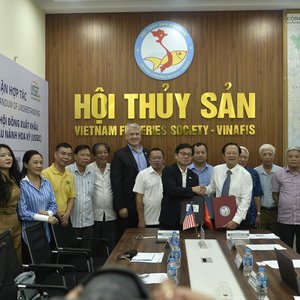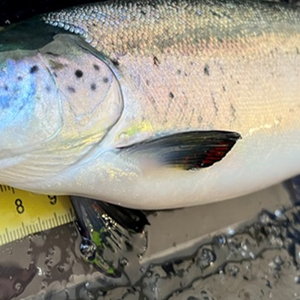IFFO Conference report
Federico Silva, President of IFFO, challenged his members to communicate the good news on the unique omega-3 health benefits and naturalness of fishmeal and fish oil to their direct customers and to the final consumers.
In his closing address to the IFFO Annual Conference in
“We need to get this news across, we have to do it together and we have to do it well,” said Mr. Silva.
His challenge followed a successful conference workshop on the Unique Nutritional Properties of Marine Resources, which concentrated on the properties of the long chain omega-3 fatty acids, EPA and DHA, of which fish are the major source for human or animal diets. This workshop was addressed by Prof Peter Howe (
Delegates learned of the unique and essential properties of EPA and DHA found in fish oil. It is becoming increasingly clear that changes to our diets have resulted in an excess consumption of the omega-6 and short-chained omega-3 oils found in plants and that this has had a number of negative effects. By increasing dietary long chain omega-3s, EPA and DHA, either by direct consumption of fish oil or by consuming animals fed on diets containing fish oil or fishmeal, a number of beneficial effects have now been established in the areas of brain development and function, heart health and weight control.
Five year supply and demand outlook
The impact of biofuel was one of the drivers on supply and demand considered by IFFO Technical Director
On the supply side he concluded that supplies were likely to remain tight. While improved utilization of by-products of food fish processing and new resources - such as krill, could increase supplies, reduced fishing effort to protect stocks in certain regions and demand for fish for direct human consumption would reduce supplies. In terms of natural variation, there would be good years and bad years but he foresaw no out-of-the-ordinary alteration to feed fish catches.
There was no strong evidence of increasing frequency of El Niños in the Pacific, although there would probably be one during this five year period; and climatic change was affecting fisheries in the
On the demand side aquaculture would continue to take a growing share of supplies of both fishmeal and fish oil; starter and special pig feeds would remain an important market; use of fishmeal in poultry feed would continue to decrease; and the growing pet food market would become more important. He forecast rising demand for products of assured quality – both because meal and oil will be increasingly used strategically at critical growth stages and because of heightened awareness of the value of their health-promoting EPA and DHA content.
“Overall global fishmeal and fish oil production are likely to remain at about 5 - 6 million tonnes and 0.9 -1 million tonnes per annum respectively”, concluded Dr Jackson.
Producers Meeting Report on fishmeal and fish oil outlook for 2007 - 8
Jean-François Mittaine, IFFO Director of Market and Trade Issues, summarized the Producers’ Meeting at the conference from the narrower perspective of IFFO members who produce 50 – 60% of global fishmeal and oil.
As regards feed fishing, landings in the IFFO countries during both 2007 and 2008 are expected to remain within the same range of around 13.0 - 13.5 million tonnes, more or less at the same level as in 2006 (13.5 million tonnes). IFFO fishmeal production will therefore reach just over 2.9 million tonnes in 2007, down from 3.0 million tonnes the previous year 2006.
For 2008, IFFO fishmeal production will slightly exceed 3.0 million tonnes. Due to the expected continuation of the same stringent resource management policies as in 2007, Peruvian catches in 2008 are expected to remain basically unchanged, around 6.0 million tonnes. In
In the aftermath of the price rally that occurred mid-2006, the world fishmeal market witnessed two series of price reductions and since early July has been at around $800/MT basis FOB Peru for FAQ fishmeal (based on figures obtained by IFFO from a limited selection of trade sources).
The current fishmeal export market is influenced by the general evolution of fishmeal demand in the major consuming countries. A case in point has been the key Chinese market where fishmeal consumption has declined significantly on account of the combination of adverse weather conditions, sharply delaying the aquaculture season in the spring, and the crisis in the pork sector affected by blue ear disease which has generated a sharp reduction of the herd. Also, in
This easing of prices is contrary to the strengthening of prices for many other commodities, particularly in the grain and oilseeds sector. The current fishmeal/soybean meal price ratio has now declined close to the 2:1 level, for the first time in more than two years.
The Producers Meeting reported that the outlook for fish oil is completely different. In line with all vegetable oils, crude fish oil prices have reached $1000/MT FOB
And finally
Looking ahead at the future of the feed fishing industry, Kristjan Davidsson, from main conference sponsor, Glitnir Bank of
At their board meeting the directors of IFFO agreed on a feasibility study into the introduction of an IFFO Code of Responsible Production of Fishmeal and Fish Oil.
Nils Christian Jensen, CEO of Triple Nine,
The 2008 IFFO conference will be held in










